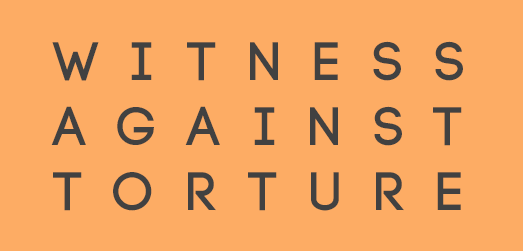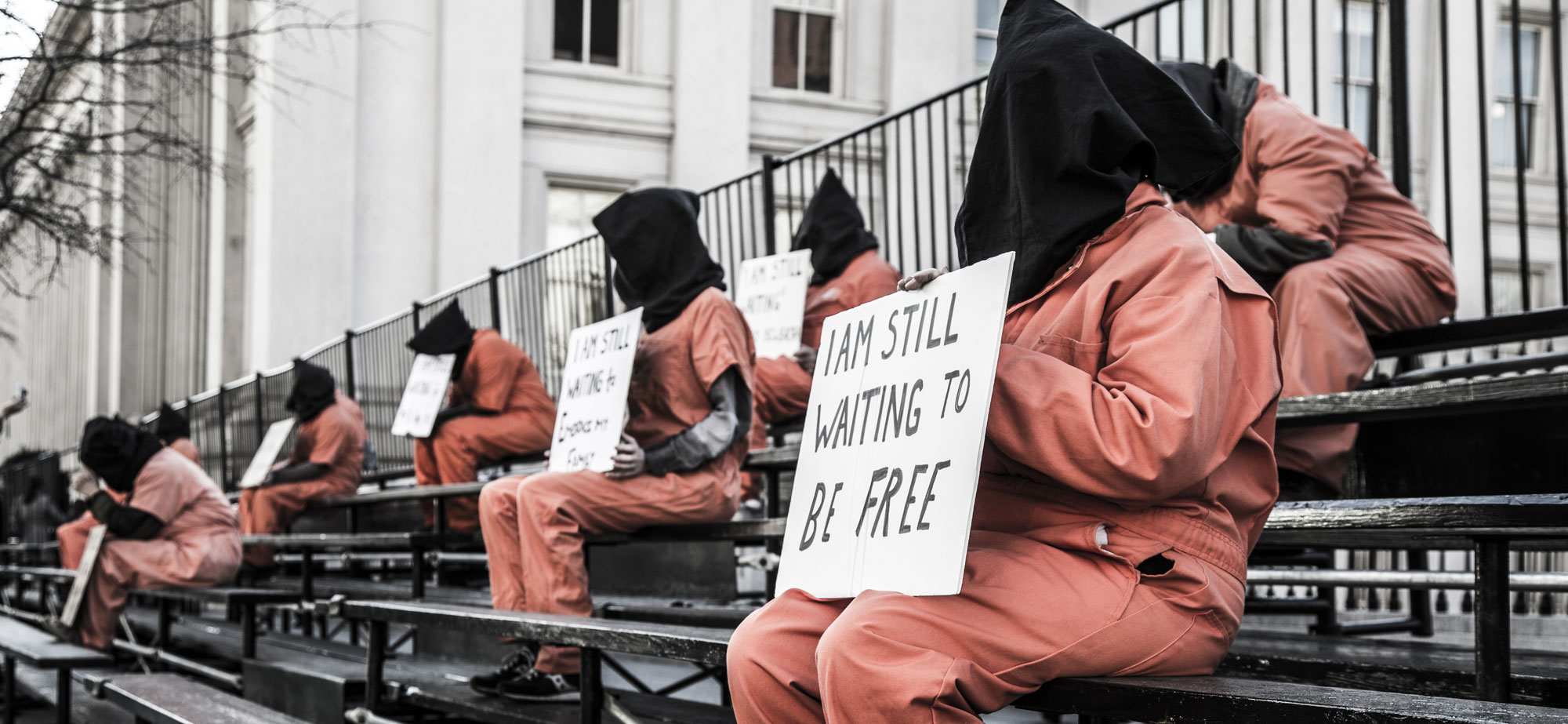From the Archive
Dreams Deferred at Guantanamo
As our readers may recall, in December of 2005, some twenty-five activists from several Catholic Worker communities journeyed to forbidden Cuba to call attention to the plight of over 500 Muslim men imprisoned at Guantánamo Bay. Rumors had been confirmed by lawyers from the Center for Constitutional Rights: prisoners at Guantánamo were being subject to cruel, inhuman, degrading treatment and torture.
Consciences were incited, and then summoned abroad, by the vast hunger strike occurring within the prison itself. At the time, the degree to which the allegations against the prisoners were true was somewhat unclear; we knew only that torture was its own form of terrorism, and that it was criminal. But the overkill rhetoric of the Bush Administration was unnerving. Vice President Dick Cheney went so far as to opine that the US military and intelligence agencies would have to begin to “work…the dark side.” The Secretary of State Donald Rumsfeld would for years hammer home the point that Guantánamo prisoners were the “worst of the worst,” that they were highly trained al-Qaeda operatives who were captured by the US military on the battlefield. General Richard B. Myers, chairman of the Joint Chiefs of Staff, warned that “these are very, very dangerous people…. These are people who would gnaw through hydraulic lines at the back of a C-17 to bring it down.”
The rhetoric was unmitigated and unchallenged in the mainstream media. Even to this day. And yet we now know that the vast majority of the nearly 800 prisoners to have ever passed through Guantánamo were guilty of nothing. Innocent men ripped from their villages and families. Surely, many of them are admirable men, and as we’ve come to know certain of them are downright heroic. Marc Falkoff, one of the pro bono lawyers for Guantánamo prisoners, expresses the shock when confronted with this reality: “The plain fact is that we went down to Guantánamo and we found that hundreds of these guys are in fact innocent civilians…. People think that… they’re really terrorists, and I’m just trying to do some lawyerly hocus-pocus, and it’s far from the truth…. I’m looking at evidence that, if the ordinary person looked at it… they would say, ‘This is absolutely, thoroughly ludicrous. Are you serious that this is why this guy is here?’ I mean, I’m talking about triple or quadruple hearsay, where the original declarant was tortured or abused in some way. That’s the kind of quality of evidence. To compare Guantánamo to the Salem Witch Trials is bang on. That’s what we’re talking about: webs of incriminating statements from increasingly untrustworthy sources.”
We have maintained our activism over the past seven years. And our indignation? Has it dried up like a raisin in the sun? Or festered like a sore? Or does it stink like rotten meat? Or has it crusted and sugared over like a syrupy sweet? I suppose we each feel differently, but we can be nothing but shamed at the death of poet and hunger-striker Adnan Latif. On September 8, 2012, he became the ninth prisoner to die at Guantánamo, the fourth on President Obama’s watch. One hundred sixty-seven prisoners are yet incarcerated at Guantánamo. The majority of these prisoners were cleared for release by President Obama’s task force, but most do not have any prospect of being repatriated. In other words, the Obama administration admits that the government has no case against more than half of the prisoners. This was certainly true for Latif who had not been seized any battlefield, rather, was handed over by Pakistani intelligence for a $5,000 bounty. (Only five percent of Guantánamo detainees were captured on the battlefield,
and a large plurality were given up for bounty).
Latif was cleared for release three times under the Bush administration (initially in
2004) but remained at Guantánamo. He was cleared again under the Obama administration, in this case with the consent of every American intelligence agency. However, he continued to remain at Guantánamo because the Obama administration, quite contrary to the genuine rule of law, had imposed a moratorium on the repatriation of prisoners to Yemen (because al-Qaeda is suspected to be active there). Finally, in 2011, after winning his habeas corpus plea, a federal judge ordered him released from Guantánamo. The Obama administration appealed that decision, and it has been argued that they did so in order to gut habeas corpus of all meaning, knowing that the United States courts of appeals was dominated by conservative judicial activists who were seeking to do the same. Such indeed occurred when they won the appeal. Then in 2012, the Supreme Court—the final court of appeals—unanimously refused to hear Latif’s case. And the gutting of habeas corpus was, quietly, made permanent.
Latif, one of the earliest prisoners at Guantánamo, was taken captive when he was in his mid-20s, taken from his wife and child, his parents and siblings. He was held without charge or trial for more than ten years, and throughout that decade, he suffered the worst abuses Guantánamo had to offer, under both the Bush and Obama administrations: beatings, including a dislocated shoulder on his first day at the camp; stress positions; sensory deprivation and overload; long-term solitary confinement; humiliation; and religious persecution. And drugging (there are now serious allegations that prisoners entering Guantánamo were given medications known to have dramatic neuropsychiatric side effects, as well as being subject to “chemical restraints” while in the prison). Yet, the innocent man had the courage to resist such violence and indignity. He participated in a series of hunger strikes, in one case dropping from 150 to 87 pounds! During these protests, he was one of the many who would be subject to even more torture—being illegally and brutally force-fed by the military. Latif said these force-feedings felt like “having a dagger shoved down your throat.” Overtime, his resistance would ultimately lead to frequent, perhaps constant, drugging. Classified as “non-compliant, sedatives were often used to subdue him. Latif complained to his lawyers of being forcibly administered unknown medications.
Yet it seems he never devolved into hatred, writing in sorrow, “America, what has happened to you?” For years Latif swung between episodes of resistance and despair. Despair which was in some part generated by our refusal to speak out against Guantánamo. As he wrote in one of his poems, “Where is the world to save us from torture?/Where is the world to save us from fire and sadness?/Where is the world to save the hunger strikers?” While imprisoned, he attempted suicide several times. If this is indeed sinful, who bears the guilt?
As regards his sudden death, the military recently ruled out suicide. Data from the autopsy has yet to be analyzed, but there is widespread speculation that drugs will figure prominently in the final determination. That said, the Center for Constitutional Rights continues to insist that all deaths at Guantánamo be independently investigated. Not a single such investigation has occurred, including the deaths of three prisoners in 2006, believed by many to be torture-related homicides. We encourage our readers to visit ccrjustice.org and sign their “Close Guantánamo With Justice” petition.
Our ignorance or indifference or cowardice may well come back to haunt us. When you begin to torture the “other,” you are infinitely closer to torturing your own. The National Defense Authorization Act (NDAA) of 2012, passed by more than two-thirds of the US Congress, contains provisions which grant the Obama and future administrations the authority, to detain indefinitely, without charge or trial, anyone on the basis of executive suspicion, including US citizens picked up in the United States. That amounts to tyrannical authority and the American people should rebel against it. What has become of our indignation? Does it just sag like a heavy load… or…? !



Join us on social media